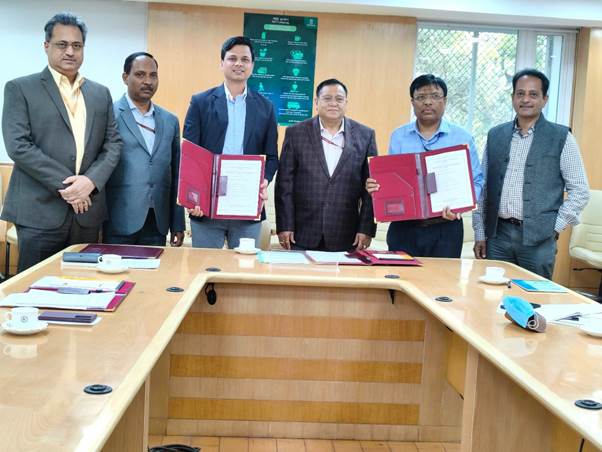Context:
Recently, NITI (National Institution for Transforming India) Aayog, in collaboration with the US government, organized a pivotal two-day workshop on Carbon Capture Utilization and Storage (CCUS) in New Delhi.
Key Highlights of the Workshop:
- Focus on Hard-to-Abate Sectors: CCUS was highlighted as a crucial tool for decarbonizing industries vital to India’s economic growth, such as steel, cement, and fertilizers.
- Policy Framework Development: NITI Aayog has formed four technical inter-ministerial committees to address challenges in CCUS implementation, covering standards, storage, transportation, and CO2 utilization.
- US-India Collaboration: The workshop emphasized the strong partnership between the two nations in developing CCUS technologies, with Ambassador Garcetti cleverly rephrasing CCUS as “Collaboration and Coordination with the US.”
- Energy Trilemma: Discussions centered on balancing energy security, affordability, and environmental sustainability, particularly in the context of India’s growing energy demand.
- Technology Integration: The need to couple efficient power generation technologies like Ultra Supercritical (USC) and Advanced Ultra Supercritical (AUSC) with CCUS was stressed.
- R&D Cooperation: Workshop sessions explored potential collaboration in carbon management research and development between the US and India.
What is CCUS?
- It is a set of technologies and processes that enable the mitigation of carbon dioxide (CO2) emissions generated from large-scale point sources such as power plants, industrial facilities, and refineries.
How does CCUS work?
A CCUS application consists of three stages:
- Capture: It involves capturing CO2 emissions through the methods of: post-combustion, pre-combustion and oxy-fuel combustion. Currently, CCUS can capture around 90% of the CO2 present in flue gas.
- Transport: Once the CO2 has been captured, it is compressed into a liquid state and transported by pipeline, ship, rail or road tanker
- Storage of CO2: The transported CO2 can be stored in deep geological formations, usually at depths of 1 km or more, including permanently stored in depleted oil and gas reservoirs, coalbeds or deep saline aquifers.
Legal and Regulatory Frameworks: Experts deliberated on key policy issues like: –
- International Standards, Business Cases & Early Opportunities for India;
- CO2 technologies and their potential in various fields, Carbon Source and Sink Mapping.
- Carbon Mapping: The workshop addressed the importance of mapping carbon sources and sinks, as well as developing storage pilots and carbon hubs.
- Global Perspective: Panelists discussed harmonizing regulatory mechanisms and policies to promote CCUS on an international scale, considering the impacts of regimes like the Carbon Border Adjustment Mechanism (CBAM).
- This workshop overall represents a significant milestone in India’s journey towards achieving its Net Zero 2070 target, showcasing the country’s commitment to innovative climate solutions and international cooperation in the fight against global warming.

